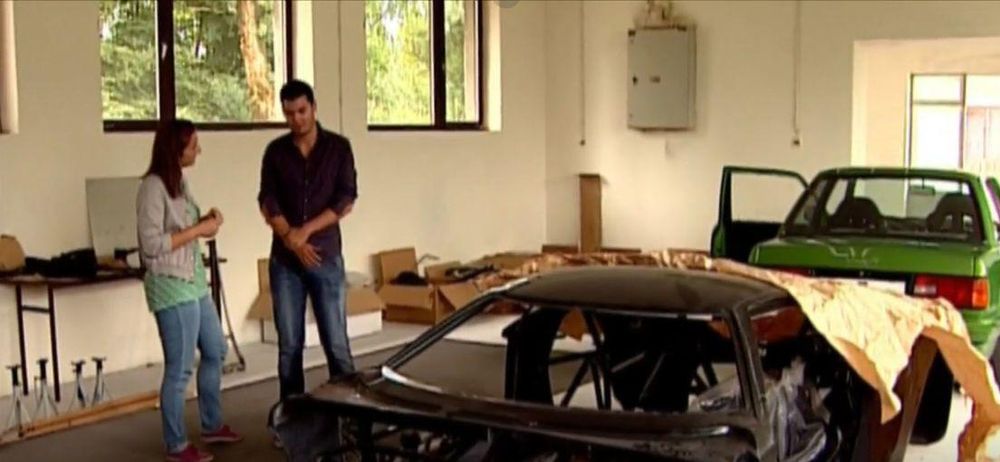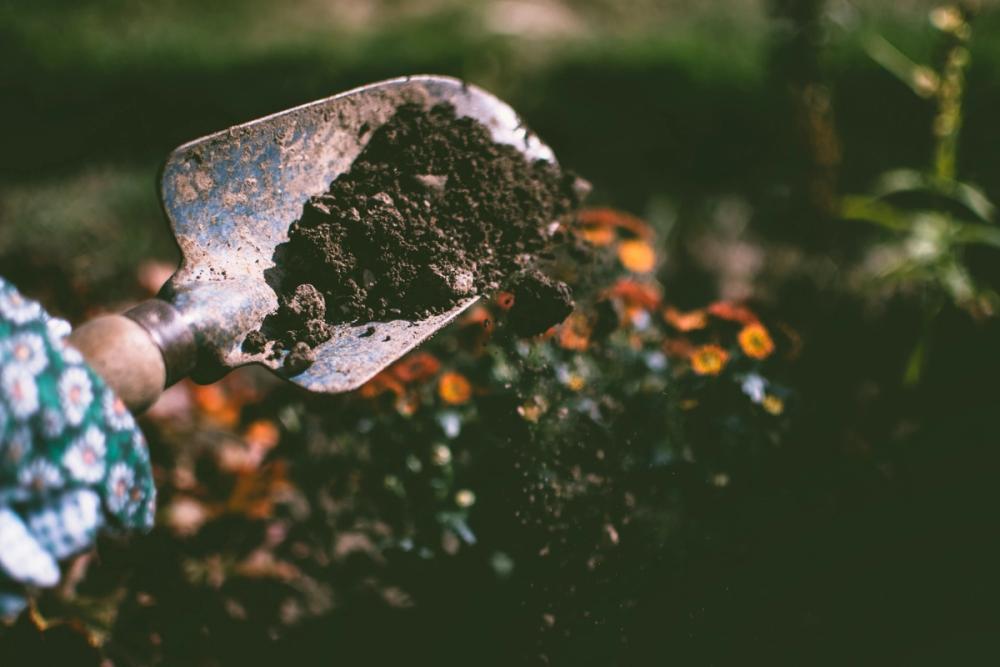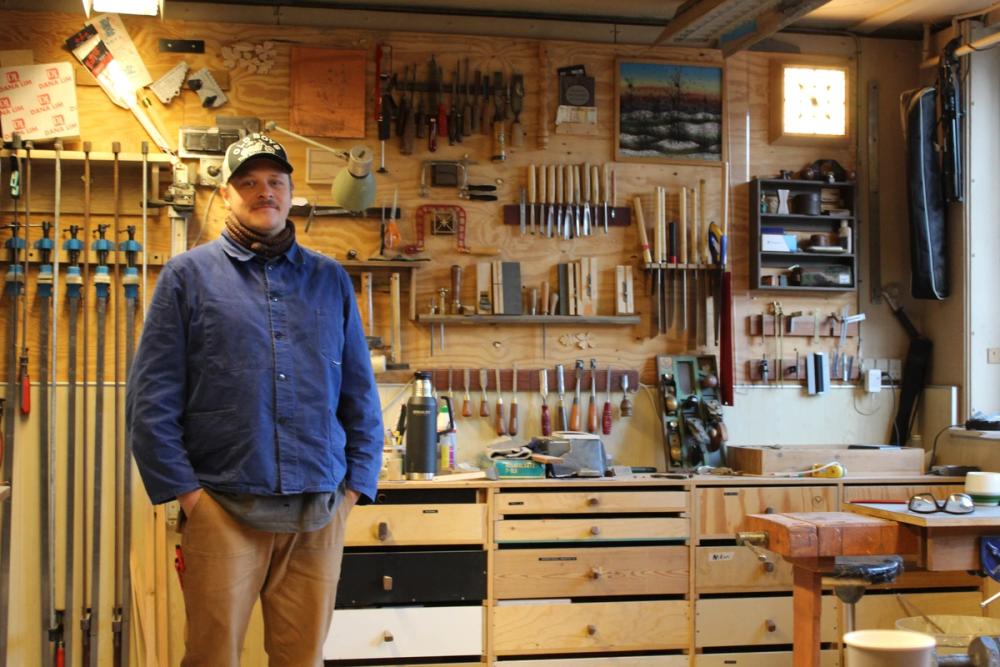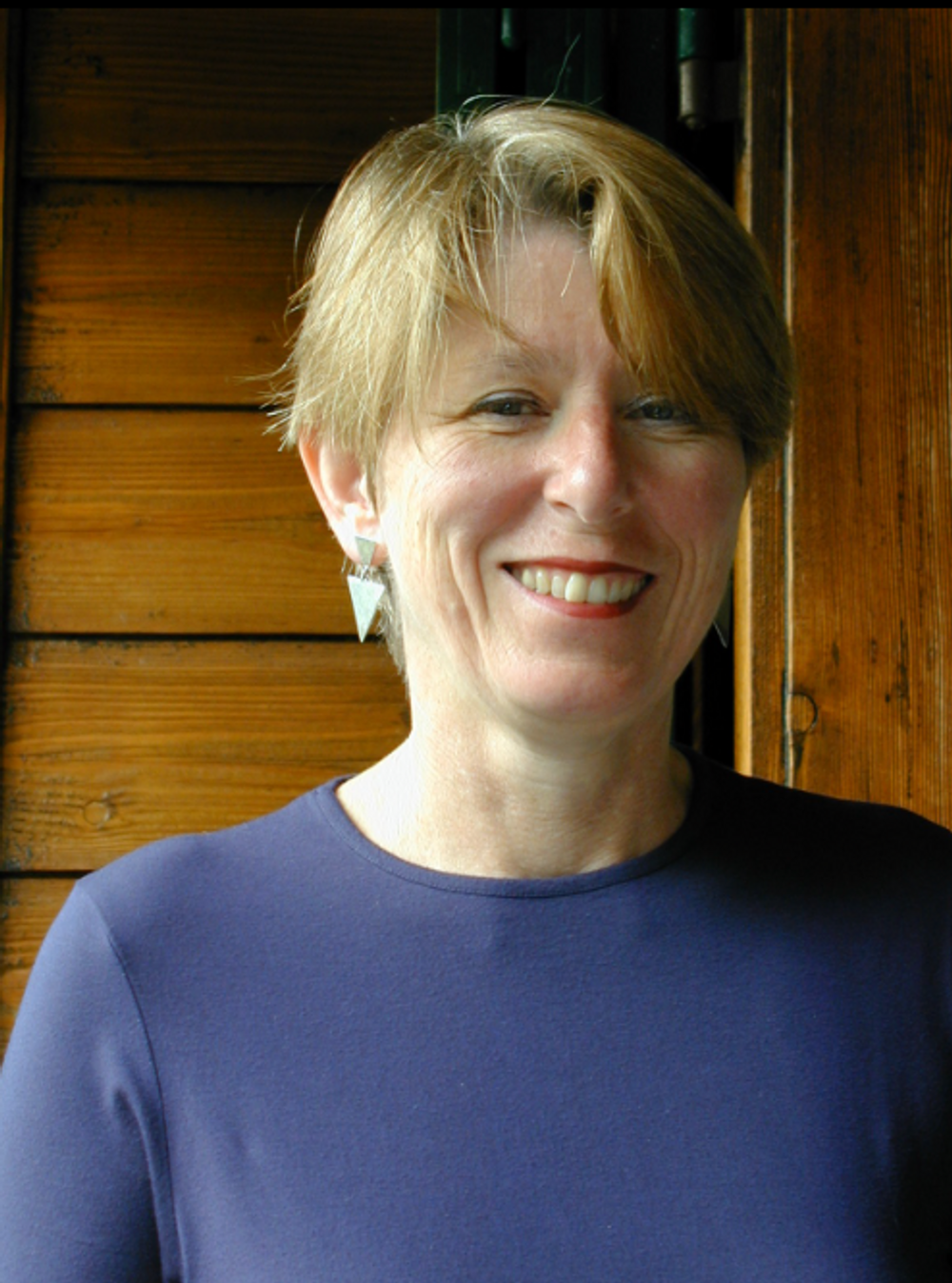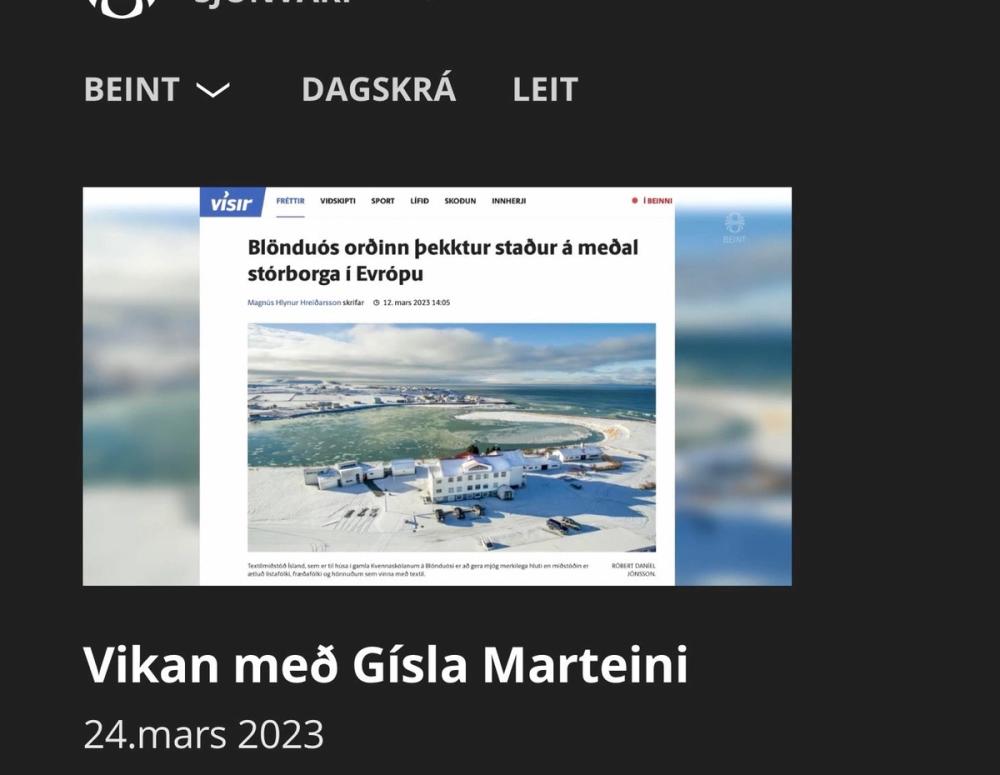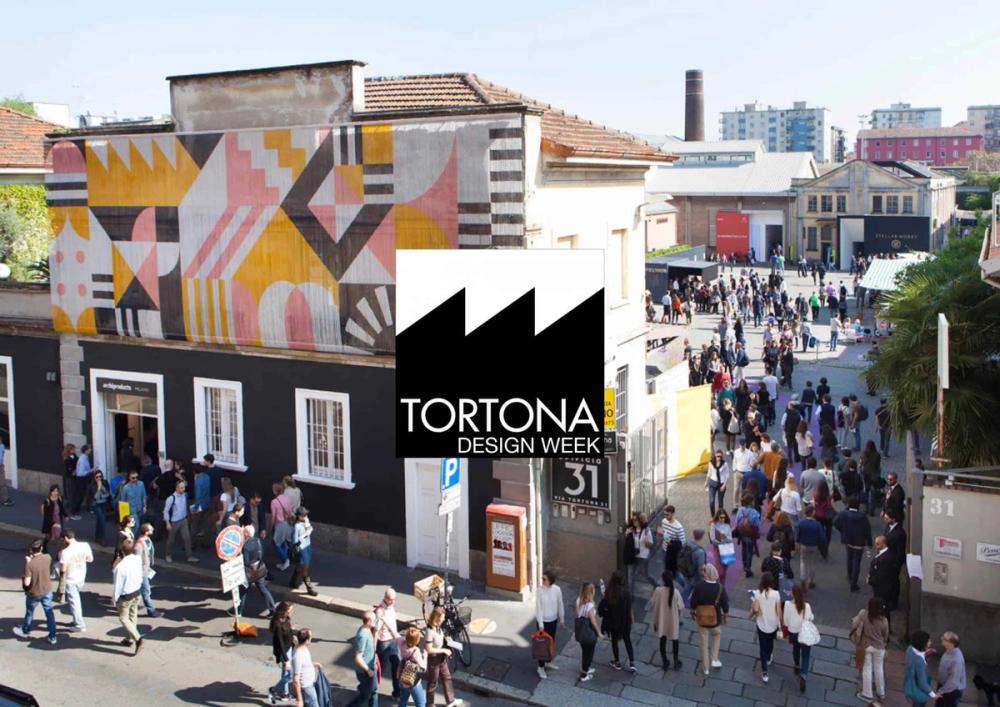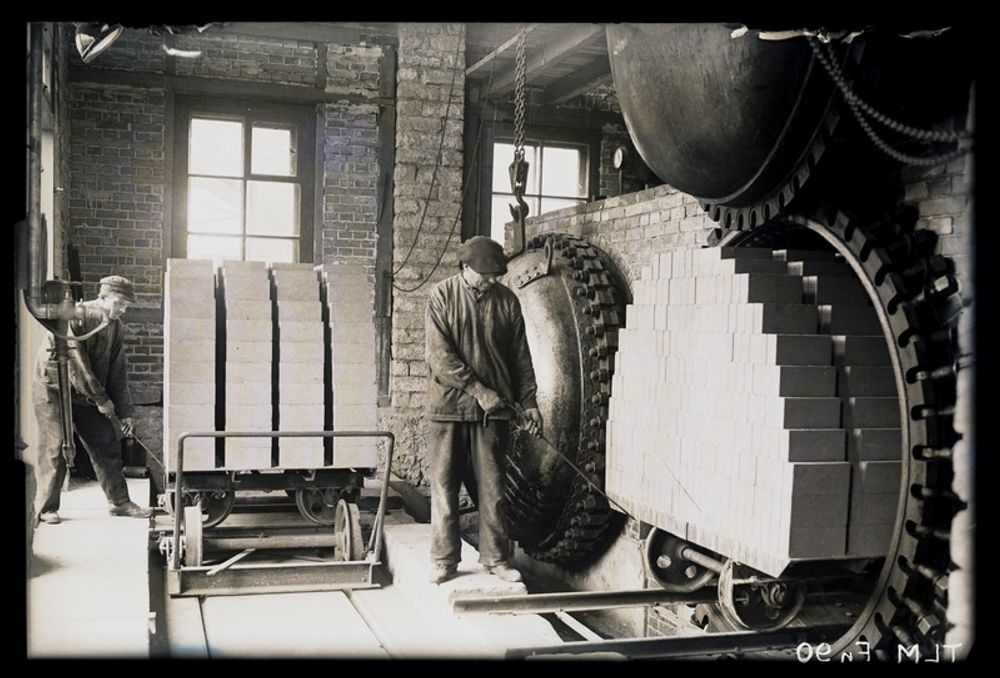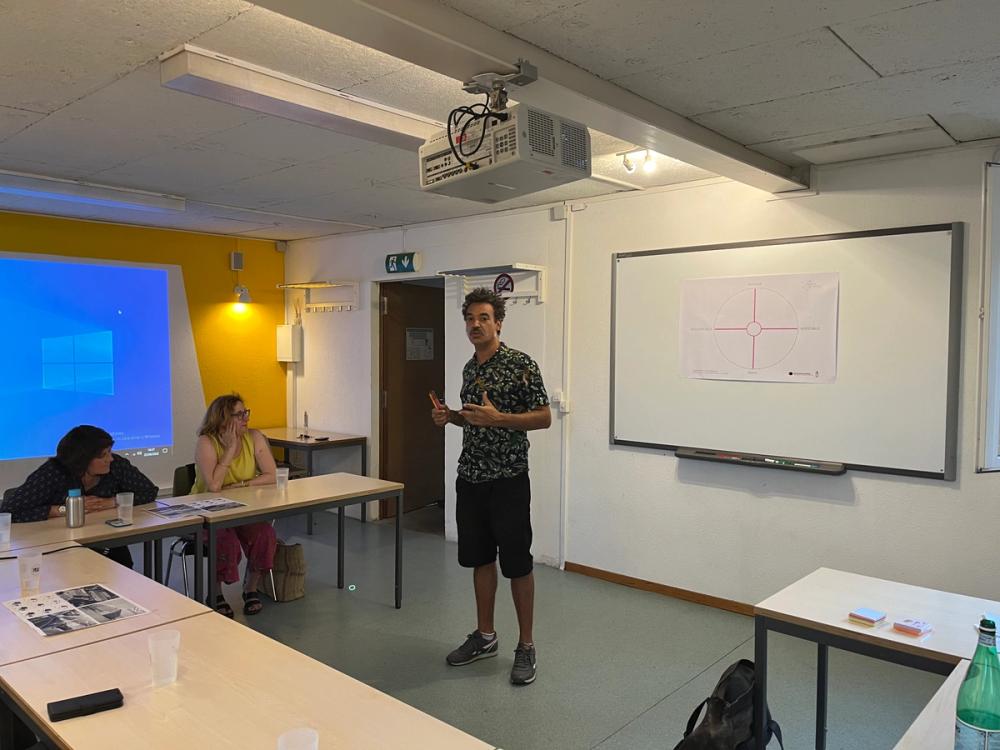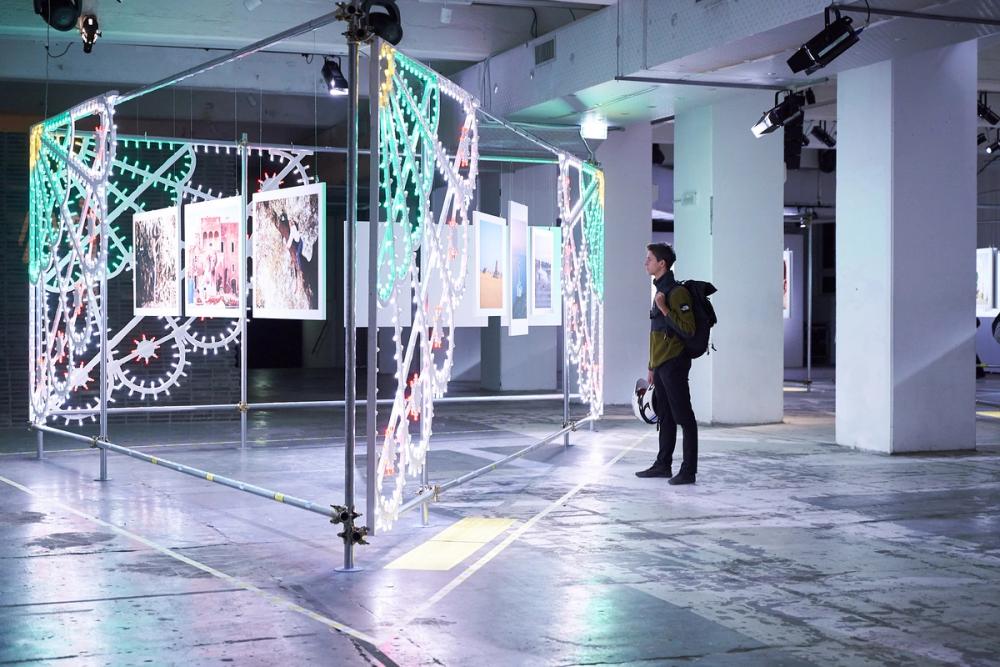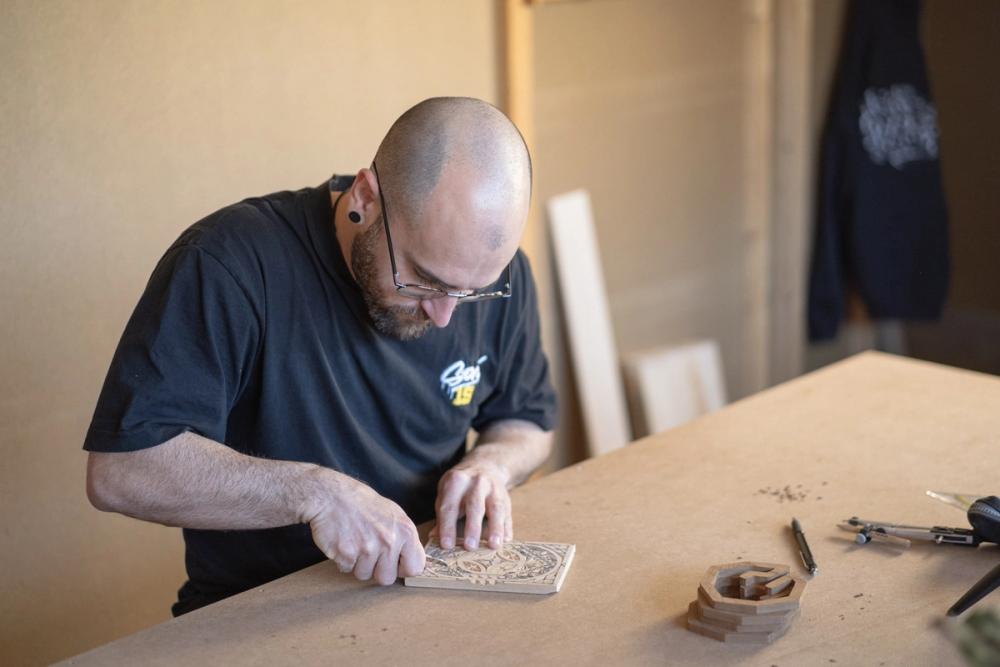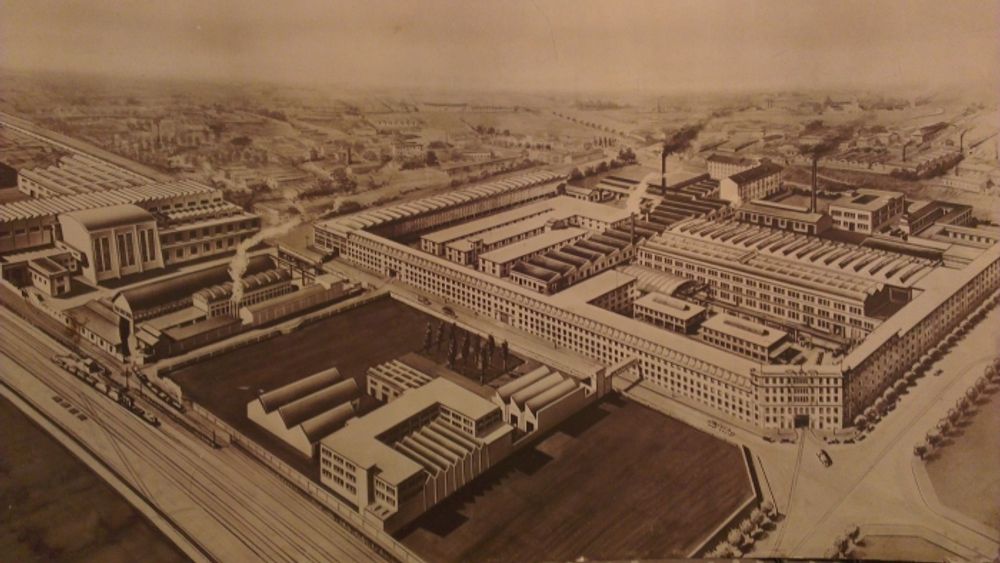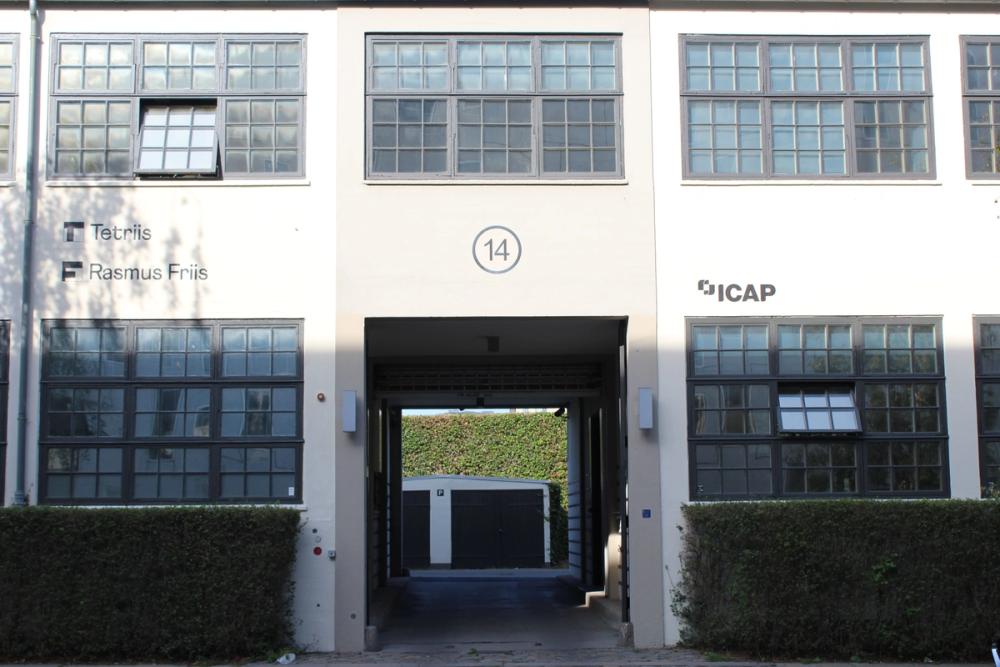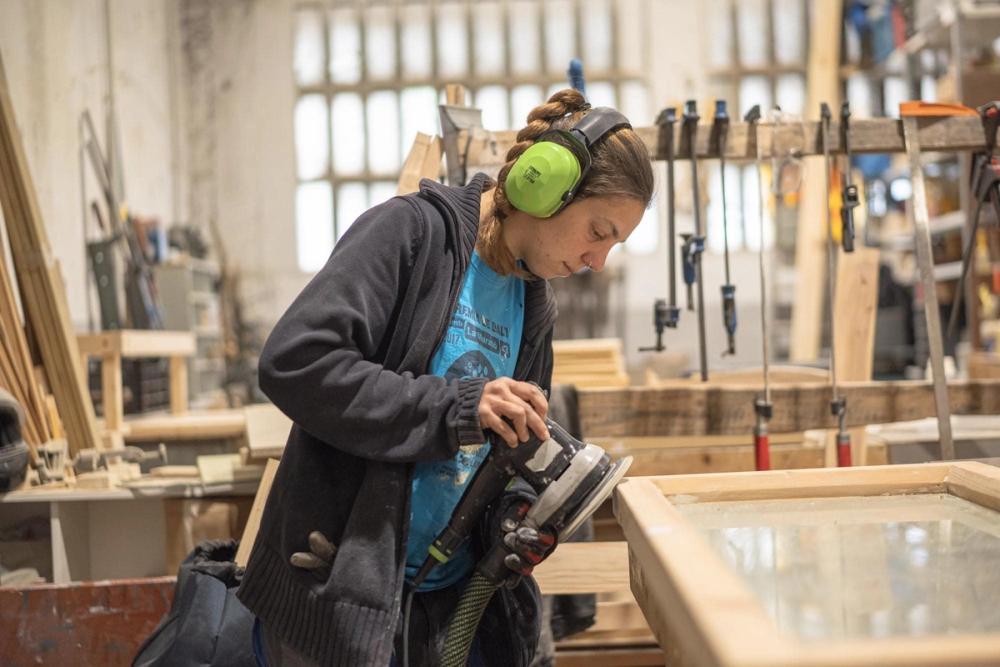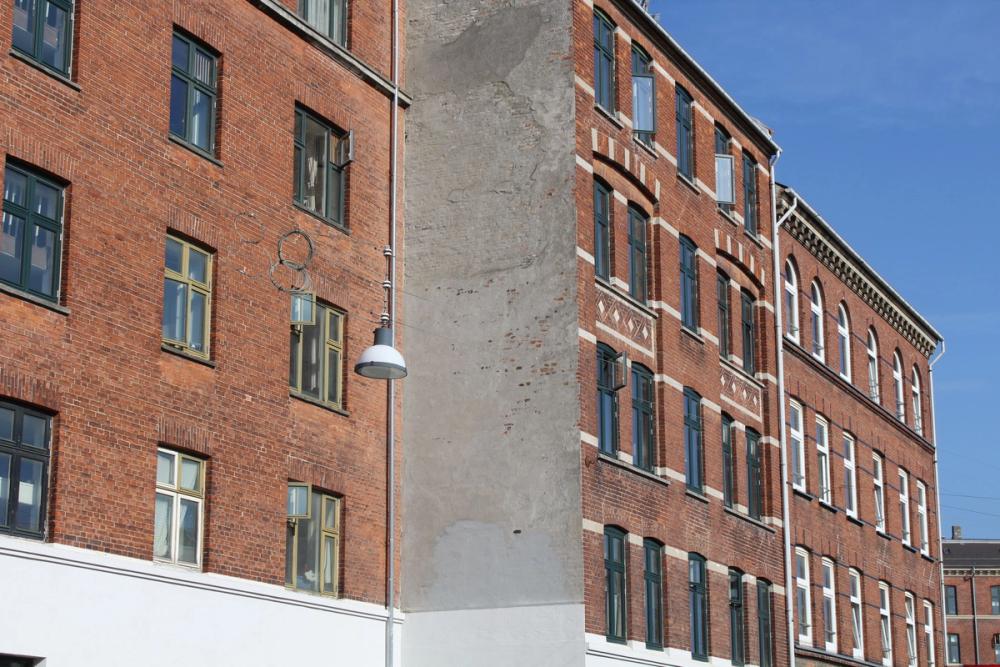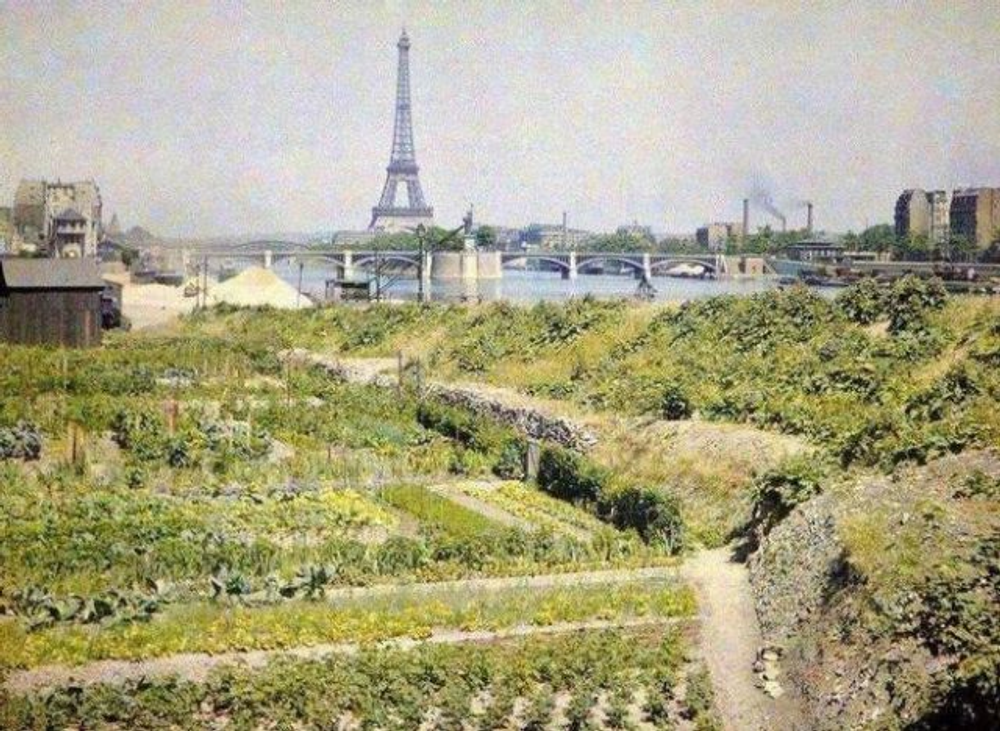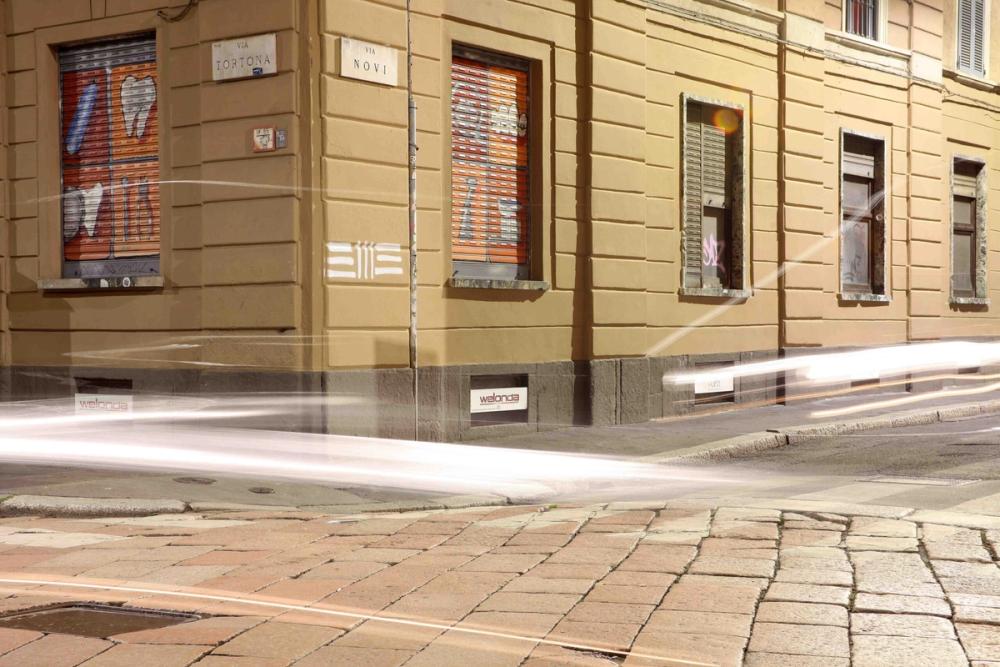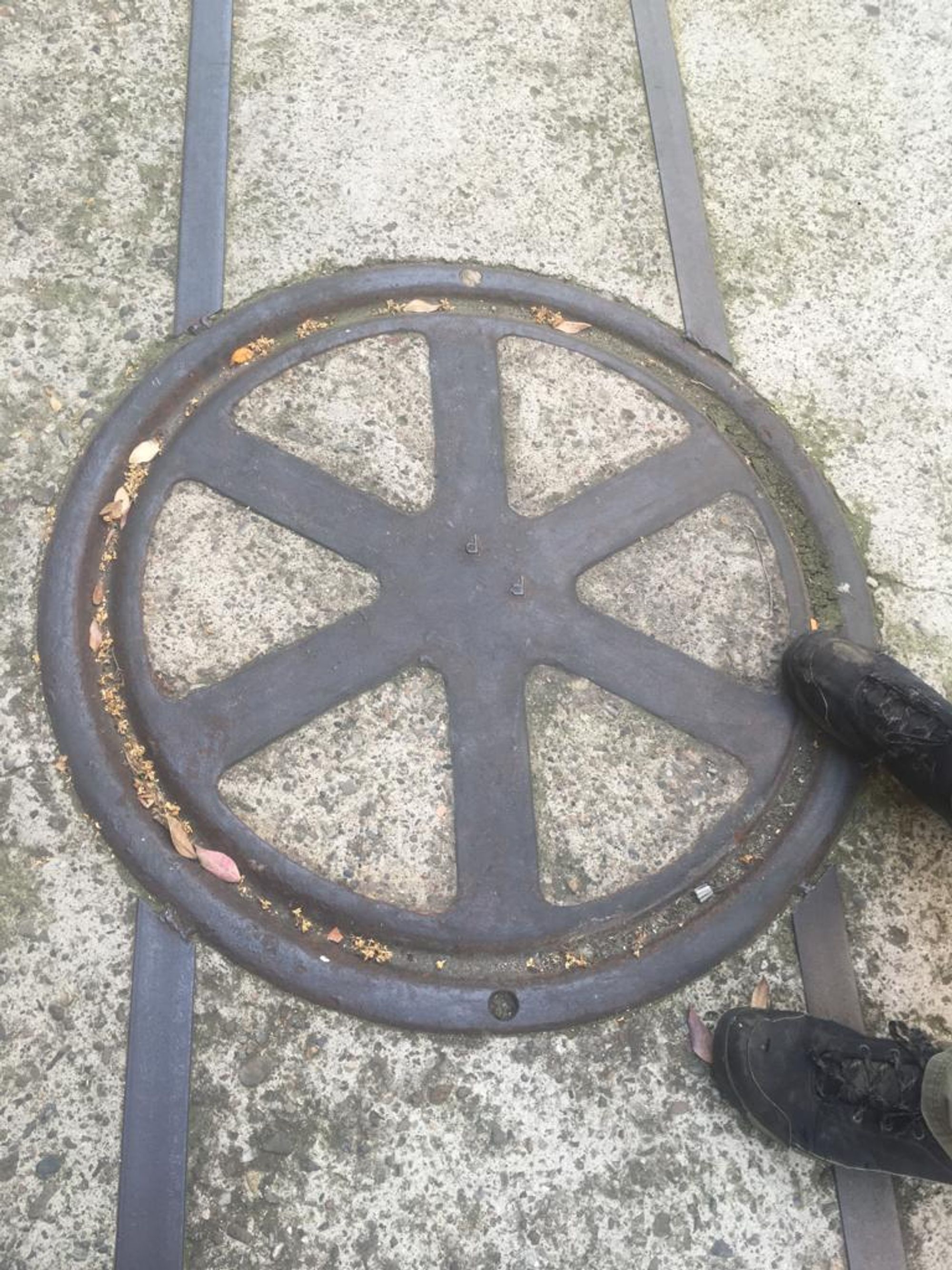Carlo Traviganti:
I’ve always lived in the neighborhood. Until the end of the 80s, that of Via Tortona, was a popular area, very fascinating. I arrived to work in '79. My workshop in via Novi, initially (before I took over) was an anarchist social center: "Il Fabbricone di via Novi"a place that housed needy citizens who also lived with their families. Women with children who came from southern Italy and, increasingly, more often from the countries of Southeast Asia.
I had a turning shop of precious metals: I was turning into a sheet, that is, embossing the metal, mostly brass and silver, with hard stones. When we started there was a great collaboration between the various craftsmen and even the trattorias were just made for people who, all together, at lunch, went to eat.
Via Forcella, via Bugatti were part of an area of craft workshops hammer shooters, silversmiths, metalworking, carpenters. There was the carpenter Soprani, the glassmaker Spini, the glassmaker Tamburini and then there were us. Until the end of the 80’s, production in the district, among joineries, hammerheads, and plate turners, was in turmoil. There were those who helped me in my business, in the streets that now you do not even imagine. There was Grandi who made springs by hand... A wonderful place!
Of the reality of Ansaldo, I remember that the company Chiesa, which took over, had separated the various buildings, while I well remember the entrance of the Magazzini della Scala.The relationship with ex-ansaldo was, for me, with the laboratories of La Scala for which I made chandeliers, braziers, armor and helmets for works that have represented at La Scala. I know the director well. I also worked for Rancati who built the sets. I had many teachers and the same workers took me under their arms and accompanied me on my path of formation.
I was also lucky enough to work for the Arab royal families with whom I worked a lot. I did table services for weddings, births and various parties for princesses. I worked gilded brass, silvered, chiseled and set with stones, such as malachite and sapphire. Many objects have been made: many perfume holders, many coffee pots, teapots, censers and, from 1985 to 2000, I had my period of 'boom' that allowed me to enlarge. Then, there were also dark periods, during the First and Second Gulf Wars, during which I suffered a veritable artisan blackout. Over the years, the social structure has changed, because it was a very popular neighborhood. We were renting with my parents and, at the time, there were families that could financially support even a young man who decided to come to work. Now the prices are sky high!
There was the fantastic iron bridge, a real gap that continued and joined the station, where commuters arrived and crossed, arriving in this district of factories and shops. At noon, on break, we went to have lunch together and to have a chat. There was the Apulian dairy in Via Tortona, just ahead of the boccino, where there was the 'sciura' Maria who prepared delicious dishes and was a point of reference that now there is no more, as well as the Salumeria di via Savona. The Osteria del Binari, historic, and now very well known throughout the city, is a special place because close to the railway, a border crossing every day by those who worked in the neighborhood. They met many people and they can tell you stories of characters who passed by like Sylvester, now 80 years old, who has a mechanical workshop, an eclectic character (he has an old airplane in the warehouse, vintage bikes...); they knew all the workers who commuted.
At the social level there was more harmony and union between people and, among craftsmen, there was a little more creativity and desire to experiment. It was perhaps a more material world, where we worked with the subject and with young people who wanted to learn a trade that today is being lost and is, instead, a highly sought after profession. In Italy there are very few plate turning machines.
If today a young man wanted to undertake the job, of course, he should practice, but above all have a lot of will and desire to learn a trade by making some sacrifice. I see, however, that manual skills are being lost and this type of craftsmanship is not being handed down. I have three children and I tried with them, but they rightly have to make their lives.
In general, until the end of the 80s, production in the district, among joineries, hammer-turned plate shooters, was in turmoil. But with time, and with the arrival of Armani, everything changed, even superstudio. Some have closed x economic problems, by age or because they have failed to pass on to their children. They moved and I was the last to leave. It remained Tamburini, historic glassworks. I worked with him; I had the glass cut and the mirrors shaped. A great craftsman. He too has much to tell. In addition to Tamburini, there was Balducci, chiseler, the best on Milan: The vase filled him with pitch or wax and pulled out some wonderful pieces. Then Giulio Viganò, the hardware store on the corner of via Montevideo and Luciano Canepari, also had a mechanical workshop, in via Novi.
As I said, I arrived in '79 and, during Covid, I came away. With my family, we renovated the workshop and then put to income, so we could take a larger shed in Buccinasco. Now rent for events and I took other spaces around the workshop to enlarge.
I reluctantly left, it was a difficult choice. Mine was a situation of 15 people, also with heavy machinery, but there was no sense in still being here where the trucks are struggling to get and where the noise begins to bother. People were used to this system, they were in symbiosis with craftsmanship. Now, every little noise bothered them. Where I am now, however, I am working well and I found a situation similar to what was here once. Of course, it was more distinctive here because you were in town.
The drive for change stemming from Fuorisalone and Fashion has changed the whole structure of the area; improvements have been made, but those who have resisted and been smart have kept the characteristics of the past.
what the archive is about
The Living Archive explores the potential of (post)industrial heritage to transform production in our cities. We collect stories with participatory heritage methods. The nodes for the local collection efforts are Fab City Hubs (FCH). The collection has been carefully assembled by FCH teams who have been learning about, co-creating and applying participatory heritage-making approaches, emotion networking methodology, oral history principles and creative perspective-taking. Select tags and categories to filter stories in the archive below. Explore their connections in the network graph.



























